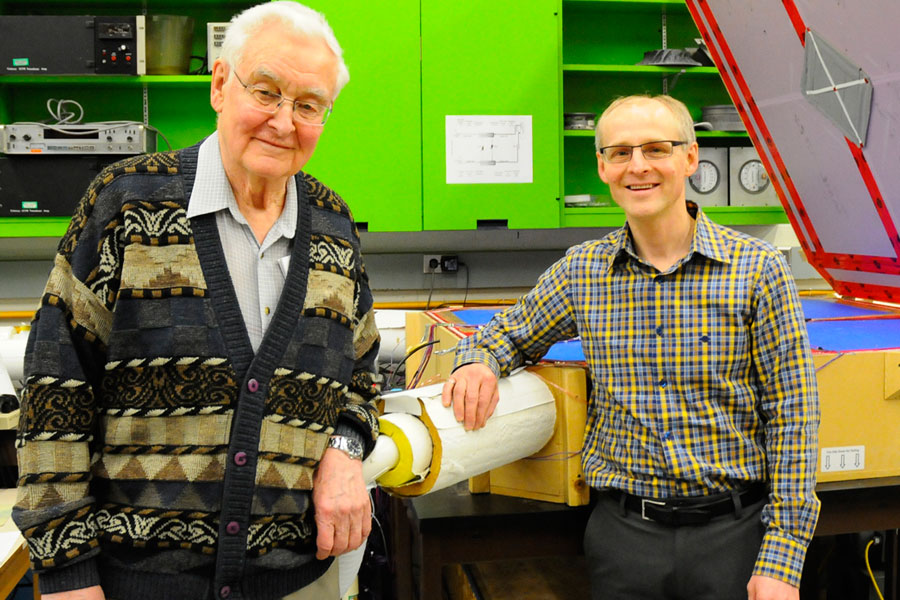
Cool collaboration
Two U of S researchers received a major innovation award for their collaboration with a local company on heating and cooling systems.
By University CommunicationsEngineering Professor Carey Simonson and Professor Emeritus Robert Besant have been awarded a Synergy Award for Innovation from the Natural Sciences and Engineering Research Council (NSERC) for their collaboration with Venmar CES, Inc. (Venmar CES), a Saskatoon manufacturer of energy-efficient solutions for the commercial ventilation market.
Building on the university's long history of expertise in heating, cooling and humidity control, and on the company's design, manufacturing and marketing expertise, the research partnership has developed innovative energy exchange technology for Venmar's revolutionary new heating, ventilation and air conditioning (HVAC) system that can cut building heating and cooling costs by up to 50 per cent.
The award, to be announced today during a ceremony at Rideau Hall in Ottawa, recognizes examples of collaboration that stand as a model of effective partnership between universities and industry. The researchers will receive a $200,000 research grant and Venmar CES will receive a $30,000 credit toward a future NSERC Collaborative Research Development (CRD) grant.
Simonson, Besant and their mechanical engineering students worked closely with Venmar CES to test and develop a new energy exchanger technology for the company's HVAC system. The system has the potential to improve indoor air quality and significantly reduce both the costs and greenhouse gas emissions of heating and cooling systems in buildings.
Venmar's HVAC system, currently in production and undergoing field testing, is the first product of its kind that can be easily installed in both new and existing buildings. Venmar's products are used to condition high-rise buildings around the world.
"This longstanding partnership with Venmar CES has long been one of our university's most successful industrial collaborations, and this prestigious award for professors Simonson and Besant is a richly deserved honour," said Karen Chad, U of S vice-president research. "This is a shining example of innovation that often results when our researchers partner with industry."
She noted the project has provided extensive training opportunities for U of S students. In total, 21 graduate students, four post-doctoral fellows, two research associates and four undergraduate summer students have been trained at the U of S while conducting research for this HVAC system. As well, a portion of Venmar's research and development team includes several former U of S graduate students who were involved in the project. The collaboration has also attracted more than $5 million in funding for research and scholarships from numerous sources.
The growing focus on energy efficiency and high-quality indoor air has driven demand for HVAC systems worldwide. In many developed countries, nearly 40 per cent of national energy consumption is currently used to heat and cool buildings. As a result, buildings represent the largest source of CO2 emissions in countries like the United States and Canada.
"Working together, we've developed and tested a novel method for transferring energy in an HVAC system and developed computer models to optimize this energy exchange technology," said Manfred Gerber, R&D Manager for Venmar CES. "Venmar CES' STATEPOINT TECHNOLOGY™ system incorporates this novel energy transfer method via a liquid-to-air energy exchanger and has the potential to become a successful product in the HVAC market."
This is the third NSERC Synergy Award awarded to U of S researchers. Soil scientist Jeff Schoenau and Western Ag Innovations Inc. were awarded one in 2004, while geology researcher Jim Hendry and Cameco received this award in 2008. The Synergy Awards selection committee is made up of leaders from the university, industry and government communities.

